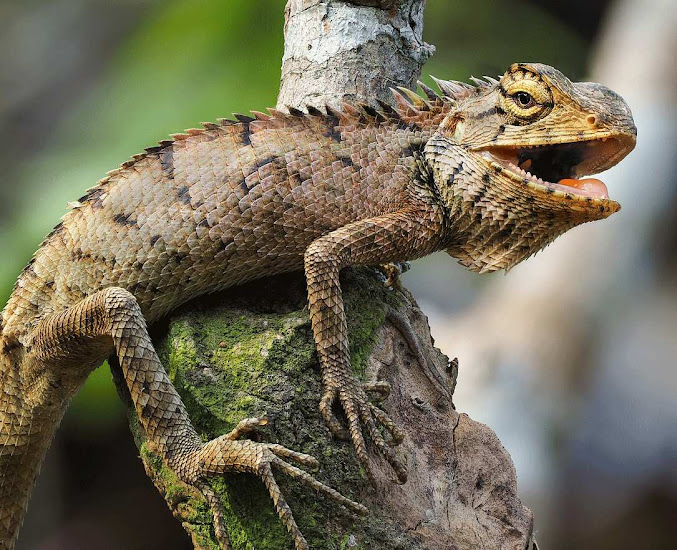North American Cougar
The North American Cougar
The North American Cougar is the second-biggest cat in the Americas and the largest of the three wild cats that can be found in Canada (the other two being the bobcat and the Canada Lynx) (the first is the Jaguar).
The usual weight of a female cougar is between 35 and 60 kilograms, whereas that of a male cat is from 60 to 100 kilos.
While they typically only live to be 10 to 12 years old in the wild, they have been reported to live up to 21 years in captivity.
Cougars have large front paws, strong bodies, and long tails with black tips that they utilize for balance.
Depending on the area they live in, they can be tawny red, dark brown, or gray in color.
They have white fur on their chest, chin, and whiskers.
With their little heads and tiny, rounded ears, they resemble domestic cats more than lions.
They feature dark patterns on the backs of their ears and the area surrounding their muzzles.
While cougars cannot roar like other big cats, they can produce a wide variety of sounds, including purrs, screams, hisses, growls, and whistles.
These big cats have great jumping and swimming abilities.
They can leap vertically 18 feet off the ground or horizontally 30–40 feet from a standing stance.
Additionally, they are capable of sprinting at speeds of up to 54 kph.
Habitat
Although they have been known to live in grasslands, swamps, and semi-deserts, cougars are most frequently found in rocky highlands and gloomy forests.
In caves, rock crevices, shrubs, hollow logs, downed trees, and dense vegetation, they take refuge.
Although a handful has been observed in the Prairies, Ontario, Quebec, and New Brunswick, the majority of cougars in Canada are found in the west.
The cougar is protected because it is an endangered species in the provinces of the center and east.
Conduct, Hunting, and Reach
Contingent upon the accessibility of prey, mountain lions might have a little or an exceptionally enormous region that they chase in. They are single, nighttime trackers and depend on secrecy and cover to catch their prey. They will quietly surprise a creature and afterward jump 30-40 feet, utilizing their exceptionally strong rear legs, to handle their prey. Cougars are equipped for bringing down and killing a creature four to multiple times their size, and that implies even a 270-kilogram moose could succumb to this hunter.
Rigorously carnivores, their #1 feast is deer, yet mountain lions will frequently chase porcupines, Virginia opossums, cottontail bunnies, American Elk (wapiti), beavers, and badgers. They have no regular foes (aside from man) yet they in some cases need to rival bears and wolves for food.
Reproduction
The only times these lonesome creatures congregate are during mating season and during cub rearing.
Every two to three years, cougars can produce two to four kittens, and the mother is responsible for raising them.
Cubs have spotted fur that sheds after six months, along with blue eyes that turn yellow.
For up to two years, the cubs remain with their mother to master the intricate hunting strategies.
They might have to go a long way after leaving their mother to find a suitable and accessible region for themselves.
Threats
Since they have no natural enemies, man has always been a threat to cougars.
In order to preserve livestock, people started murdering cougars as soon as the settlers arrived in the 17th century.
This is one of the main causes for why there are so few in the eastern regions of North America.
They are currently threatened by habitat loss and fragmentation, vehicle-related deaths, and the ongoing direct human danger from farmers and ranchers, sport hunters, poachers, poison, snares, and traps.
In Canada, cougar assaults on humans are quite uncommon.
Only 5 people have been killed by cougar attacks in the past 100 years, compared to 3 persons each year murdered by bee attacks.
Fun Facts
Cougars can bounce 18+ feet straight up and 40 feet evenly.
· They can't thunder like a lion since they don't have a hyoid bone, yet dissimilar to a lion, they can murmur.
· They are single creatures, except during mating and the initial two years after birth.
· Child cougars are called offspring or little cats who are brought into the world with blue eyes that become yellow.
· Cougars are known by in excess of 40 names all through North and South America.
· Cougars that live nearer to the posts are bigger than those that live close to the equator.
· Just the females parent their whelps and they are furiously defensive of them.
· Albeit not a dominant hunter, cougars have no realized adversaries with the exception of people.
· Cougars are nighttime trackers that utilize secrecy to follow their prey and afterward jump from a significant stretch.
· Cougars can run up to 54 km/hr however they seldom at any point pursue their prey.
· Aside from individuals, the cougar has the best normal dispersion of any well-evolved creature on the Western Side of the equator.














